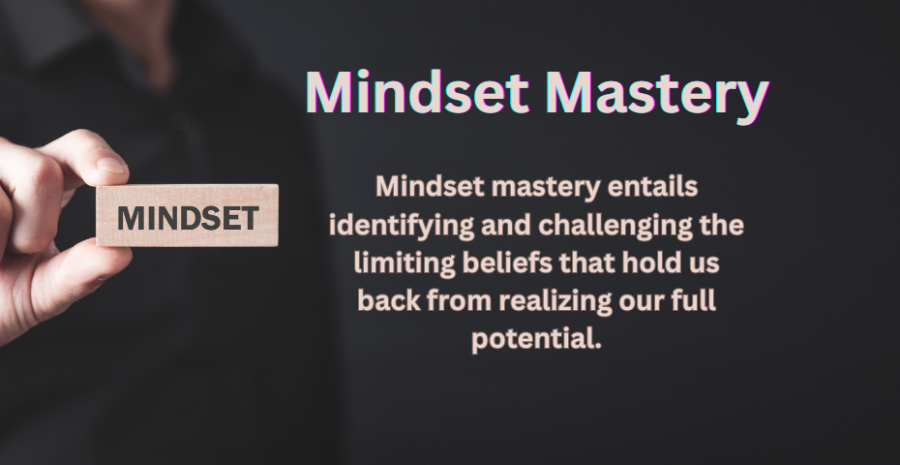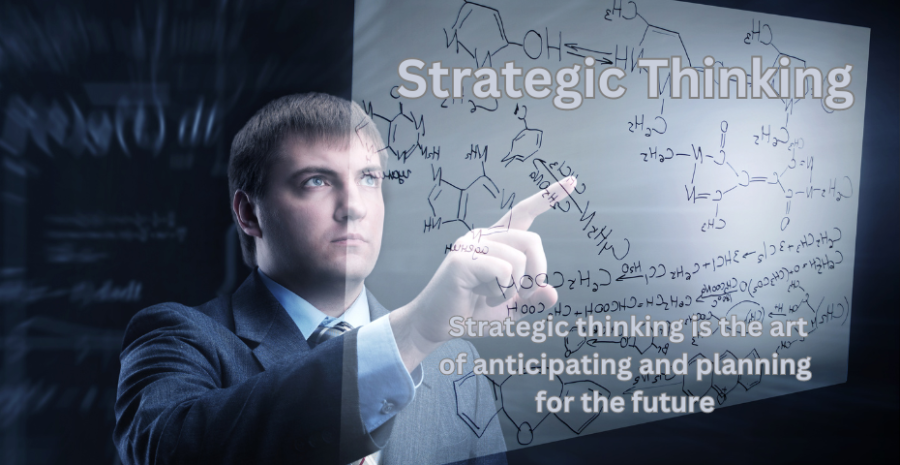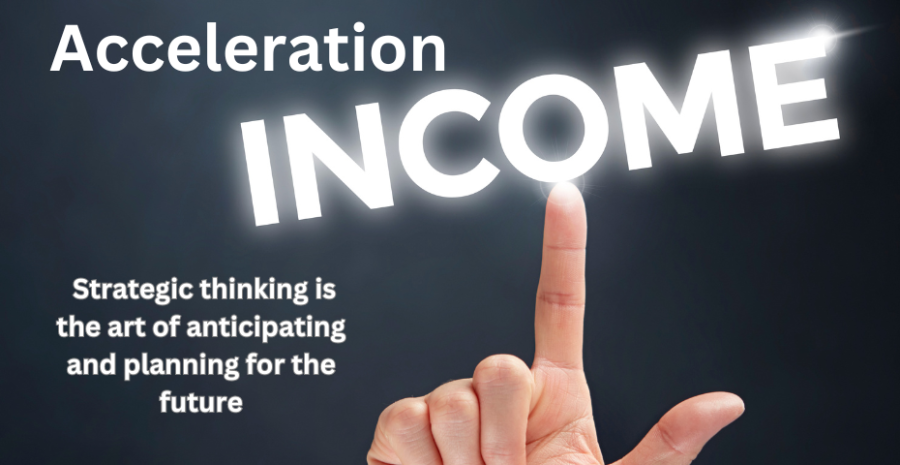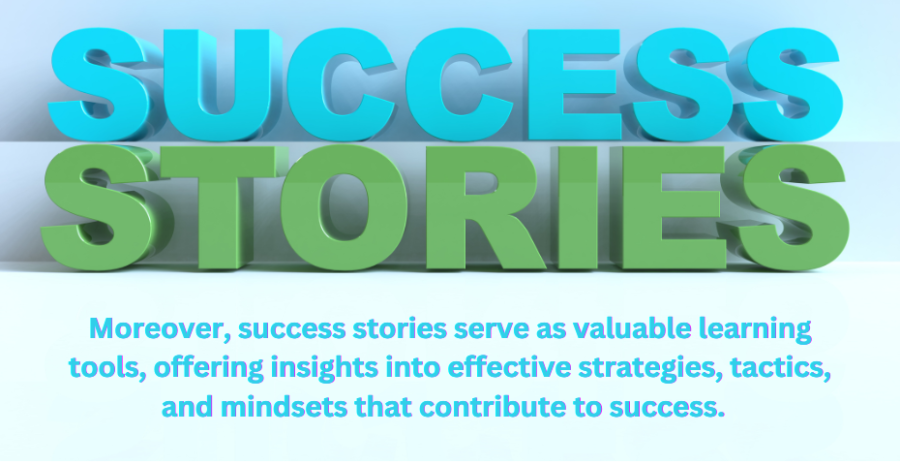
Arrive at Wealth Faster: Millionaire Fastlane Secrets Revealed.

Arrive at Wealth Faster:
Millionaire Fastlane Secrets Revealed" is your gateway to unlocking the strategies and insights necessary to accelerate your journey towards financial abundance. In this comprehensive guide, we delve into the proven techniques and principles employed by those who have successfully navigated the fast track to wealth. From mindset shifts to actionable steps, this blog unveils the blueprint for achieving rapid financial success.
Discover how to break free from the conventional slow-lane mentality and embrace the mindset of the millionaire fastlane. By uncovering the secrets of wealth creation and leveraging innovative strategies, you'll gain the tools needed to propel yourself towards your financial goals at an unprecedented pace. Whether you're seeking to escape the constraints of traditional employment or multiply your current wealth, this blog provides the roadmap to expedite your journey.
Through real-life examples, expert insights, and practical advice, "Arrive at Wealth Faster" equips you with the knowledge and resources to make informed decisions and take decisive action towards financial freedom. Get ready to unleash your potential, accelerate your wealth-building efforts, and embark on a path towards lasting prosperity. It's time to embrace the millionaire fastlane lifestyle and claim your rightful place among the ranks of the financially elite.
In the dynamic world of wealth creation, the pursuit of financial freedom often feels like a daunting journey. However, "Arrive at Wealth Faster: Millionaire Fastlane Secrets Revealed" emerges as a guiding light, offering a comprehensive roadmap to expedite your path towards prosperity.
1. Mindset Mastery:

The blog emphasizes the importance of cultivating a millionaire mindset, empowering readers to overcome limiting beliefs and embrace a mindset of abundance and possibility.
A. Overcoming Limiting Beliefs - Mindset mastery entails identifying and challenging the limiting beliefs that hold us back from realizing our full potential. By reframing negative thought patterns and embracing a mindset of abundance, we open ourselves up to new possibilities and opportunities.
Overcoming limiting beliefs often involves seeking support from mentors, coaches, or peers who can provide guidance, encouragement, and perspective to challenge negative thought patterns. Overcoming limiting beliefs can be facilitated through daily affirmations and visualization exercises, reinforcing positive beliefs and envisioning success to reprogram the subconscious mind.
Overcoming limiting beliefs may require taking small, incremental steps outside of comfort zones, gradually building confidence and proving to oneself that success is achievable. Overcoming limiting beliefs involves celebrating progress and acknowledging achievements along the way, reinforcing the belief that positive change is possible and worth pursuing.
B. Cultivating Resilience - In the face of challenges and setbacks, a resilient mindset allows us to bounce back stronger and more determined than ever. Through resilience, we learn to view obstacles as opportunities for growth and development, fueling our drive towards success.
Cultivating resilience involves reframing failure as an opportunity for growth and learning, recognizing that setbacks are a natural part of the journey towards success. Cultivating resilience includes practicing self-compassion and kindness towards oneself in moments of difficulty or setback, acknowledging that everyone experiences challenges and mistakes.
Cultivating resilience often involves seeking support from friends, family, or professional networks during challenging times, recognizing the importance of connection and community in building resilience.
C. Embracing Growth - Mindset mastery involves embracing a growth-oriented mindset, where we view failures and setbacks as valuable learning experiences rather than insurmountable barriers. By continually seeking growth and improvement, we position ourselves for long-term success and fulfillment.
Embracing growth involves stepping outside of comfort zones and embracing new experiences, even when they may feel intimidating or uncertain. Embracing growth requires a commitment to lifelong learning, seeking out opportunities to acquire new knowledge, skills, and perspectives to fuel personal and professional development.
Embracing growth entails being flexible and adaptable in the face of change, embracing challenges as opportunities for growth and remaining open to new possibilities and ways of thinking.
D. Adopting a Solution-Oriented Approach - Instead of dwelling on problems, a mastery mindset focuses on seeking solutions and taking proactive steps towards resolution. By adopting a solution-oriented approach, we empower ourselves to overcome obstacles and achieve our goals more efficiently.
Adopting a solution-oriented approach involves reframing problems as opportunities for creative problem-solving, focusing on actionable steps rather than dwelling on obstacles. Embracing a proactive mindset: Adopting a solution-oriented approach means taking initiative and being proactive in addressing challenges, rather than waiting for problems to escalate.
Adopting a solution-oriented approach often involves fostering collaboration and teamwork, leveraging diverse perspectives and expertise to generate innovative solutions to complex problems.
E. Harnessing the Power of Positivity - A mastery mindset prioritizes positivity and optimism, recognizing the profound impact that our thoughts and attitudes have on our actions and outcomes. By cultivating a positive outlook, we enhance our resilience, creativity, and overall well-being.
Harnessing the power of positivity involves cultivating a mindset of optimism and gratitude, focusing on the abundance in one's life rather than dwelling on limitations. Harnessing the power of positivity includes practicing positive self-talk and affirmations to cultivate a resilient mindset and bolster self-confidence.
Harnessing the power of positivity extends beyond individual mindset to uplifting others through acts of kindness, encouragement, and support, fostering a culture of positivity and empowerment.
F. Practicing Gratitude - Gratitude is a cornerstone of mindset mastery, fostering a sense of abundance and appreciation for the blessings in our lives. By cultivating gratitude, we shift our focus away from scarcity and lack, unlocking new opportunities for growth and success.
Practicing gratitude involves consciously acknowledging and appreciating the blessings, both big and small, that enrich our lives on a daily basis, fostering a sense of contentment and fulfillment.
Practicing gratitude can be enhanced through regular journaling, where individuals reflect on and document the things they are thankful for, reinforcing positive emotions and perspectives. Practicing gratitude is not just a habit but a mindset, where individuals train themselves to see the good in every situation, even amidst challenges, cultivating resilience and inner peace.
G. Visualization and Affirmation - Mindset mastery involves harnessing the power of visualization and affirmation to align our thoughts and actions with our goals and aspirations. By vividly envisioning our desired outcomes and reinforcing them with positive affirmations, we program our subconscious minds for success.
Visualization and affirmation involve harnessing the power of the imagination to vividly picture desired outcomes and experiences, activating the subconscious mind to manifest those visions into reality.
Regular practice of visualization and affirmation strengthens neural pathways associated with positive beliefs and goals, reinforcing the alignment between thoughts, emotions, and actions. Incorporating visualization and affirmation into a daily routine, such as during meditation or before sleep, enhances their effectiveness by embedding positive messages deeply into the subconscious mind.
2. Strategic Thinking:

Through insightful analysis and practical advice, readers learn how to identify and capitalize on opportunities that align with the fastlane principles, accelerating their wealth-building efforts. Strategic thinking is the art of anticipating and planning for the future, encompassing a comprehensive approach to decision-making that considers both short-term goals and long-term objectives.
It involves analyzing complex situations, identifying patterns and trends, and synthesizing information to formulate effective strategies. Strategic thinkers are adept at assessing risks and opportunities, weighing potential outcomes, and making informed choices that maximize value and minimize potential downsides. They embrace innovation and creativity, constantly seeking new ways to add value, differentiate themselves, and stay ahead of the competition.
Strategic thinking also entails aligning resources, such as finances, talent, and technology, with organizational or personal objectives to ensure optimal performance and efficiency. It requires a forward-looking perspective, where individuals or organizations anticipate and adapt to changes in the external environment, leveraging strengths and mitigating weaknesses to maintain a competitive edge. Ultimately, strategic thinking is not just about reacting to the present but about shaping the future, positioning oneself or one's organization for sustainable growth and success.
A. Strategic Planning - Strategic thinking involves developing a clear plan of action to achieve long-term objectives, incorporating flexibility to adapt to changing circumstances while staying focused on the ultimate goal. Strategic planning is the cornerstone of organizational success, providing a roadmap for achieving long-term goals and objectives.
It involves a systematic process of defining a vision, mission, and core values, and then formulating strategies to realize them effectively. Strategic planners conduct thorough analyses of internal strengths and weaknesses, as well as external opportunities and threats, to inform decision-making and resource allocation. Through strategic planning, organizations can identify competitive advantages, prioritize initiatives, and allocate resources efficiently to achieve desired outcomes.
It also involves setting clear objectives, establishing key performance indicators (KPIs), and developing action plans with timelines and responsibilities. Effective strategic planning fosters alignment across all levels of the organization, ensuring that everyone is working towards common goals and objectives.
It provides a framework for monitoring progress, evaluating performance, and making adjustments as needed to stay on course towards success. Ultimately, strategic planning empowers organizations to navigate uncertainty, capitalize on opportunities, and achieve sustainable growth in a dynamic business environment.
B. Opportunity Identification - A key aspect of strategic thinking is the ability to identify and capitalize on opportunities that align with organizational or personal objectives, leveraging strengths and resources to maximize potential gains. Opportunity identification is the process of recognizing and capitalizing on favorable circumstances that align with organizational or personal objectives.
It involves keen observation, market research, and analysis to uncover unmet needs, emerging trends, or untapped markets. Successful opportunity identification requires creativity, strategic thinking, and a proactive mindset to identify potential areas for growth or innovation. By seizing opportunities as they arise, individuals and organizations can gain a competitive advantage, expand their reach, and achieve sustainable success in a dynamic and ever-changing landscape.
C. Risk Assessment - Strategic thinkers are adept at assessing risks and uncertainties, weighing potential rewards against potential pitfalls to make informed decisions and minimize potential losses. Risk assessment is an essential component of strategic decision-making, involving the identification, analysis, and evaluation of potential risks and uncertainties that may impact the achievement of objectives.
It requires a systematic approach to evaluating the likelihood and potential impact of various risks, as well as developing strategies to mitigate or manage them effectively. By conducting thorough risk assessments, individuals and organizations can make informed decisions, anticipate potential challenges, and proactively implement measures to minimize negative outcomes. Effective risk assessment enables stakeholders to navigate uncertainty with confidence, ensuring resilience and adaptability in the face of unforeseen events.
D. Competitive Analysis - Strategic thinking entails analyzing the competitive landscape to identify strengths, weaknesses, opportunities, and threats, allowing individuals or organizations to position themselves effectively in the market. Competitive analysis is a vital strategic tool used to evaluate the strengths and weaknesses of competitors within a specific market or industry.
It involves gathering and analyzing data on competitors' products, services, pricing strategies, market share, and customer feedback to gain insights into their strategies and performance. By understanding competitors' positioning and offerings, businesses can identify opportunities for differentiation and develop strategies to capitalize on market gaps or weaknesses. Competitive analysis also helps businesses anticipate competitors' moves, identify emerging trends, and stay ahead of the curve in an increasingly competitive landscape.
Ultimately, a thorough competitive analysis informs strategic decision-making, enabling businesses to refine their market approach and maintain a competitive edge.
E. Innovation and Creativity - Strategic thinkers embrace innovation and creativity, constantly seeking new ways to add value, differentiate themselves from competitors, and stay ahead of changing trends and customer preferences. Innovation and creativity are driving forces behind organizational growth and success, fostering a culture of continuous improvement and adaptation.
They involve exploring new ideas, approaches, and technologies to solve problems, meet evolving customer needs, and stay ahead of the competition. By encouraging a mindset of innovation and creativity, organizations can unlock untapped potential, spark ingenuity, and foster a dynamic environment where new ideas flourish. Innovation and creativity also fuel product development, process optimization, and market expansion, enabling businesses to differentiate themselves and create unique value propositions.
Embracing innovation and creativity empowers individuals and teams to challenge the status quo, experiment with novel solutions, and drive positive change within their organizations and industries.
F. Long-Term Perspective - Strategic thinking involves adopting a long-term perspective, considering the potential implications of decisions and actions on future outcomes rather than focusing solely on short-term gains. Maintaining a long-term perspective is essential for sustainable growth and success, as it enables individuals and organizations to navigate short-term challenges while staying focused on overarching goals.
By considering the potential long-term implications of decisions and actions, stakeholders can make informed choices that align with their values and strategic objectives. A long-term perspective fosters resilience and perseverance, helping individuals and organizations weather setbacks and setbacks while remaining committed to their vision.
It also promotes strategic thinking and planning, encouraging proactive measures to anticipate future trends and opportunities. Ultimately, a long-term perspective cultivates a sense of purpose and direction, guiding individuals and organizations towards lasting impact and fulfillment.
G. Alignment of Resources - Strategic thinkers effectively allocate resources, including financial, human, and time resources, to initiatives that offer the greatest potential for achieving strategic objectives. Alignment of resources is crucial for maximizing efficiency and effectiveness in achieving organizational objectives.
By ensuring that financial, human, and technological resources are directed towards common goals, organizations can optimize their performance and leverage their strengths. Effective alignment of resources involves strategic allocation, where investments are prioritized based on their potential to generate the greatest impact and value.
It also requires clear communication and collaboration across departments and teams to ensure that resources are utilized in a coordinated manner. Furthermore, alignment of resources enables organizations to adapt to changing circumstances and seize opportunities, as resources can be reallocated as needed to address evolving priorities. Ultimately, when resources are aligned with strategic objectives, organizations can enhance their competitiveness, drive innovation, and achieve sustainable growth.
H. Continuous Improvement - Strategic thinking is a dynamic process that involves continuous learning and improvement, as individuals or organizations adapt their strategies in response to feedback and changing circumstances to maintain a competitive edge. Continuous improvement is a fundamental principle that drives organizational excellence and fosters a culture of innovation and adaptability.
It involves ongoing efforts to identify areas for enhancement, implement changes, and measure progress towards achieving higher levels of performance. Through continuous improvement initiatives, organizations can streamline processes, eliminate inefficiencies, and enhance product quality, thereby increasing customer satisfaction and loyalty. Moreover, continuous improvement promotes a growth mindset among employees, encouraging them to embrace change, seek feedback, and actively participate in problem-solving efforts.
By embedding continuous improvement into their DNA, organizations can stay ahead of the competition, respond quickly to market shifts, and maintain relevance in a dynamic business landscape. Embracing a philosophy of continuous improvement is not just about achieving short-term gains but about fostering a culture of excellence and innovation that drives sustained success over the long term.
3. Income Acceleration:

"Arrive at Wealth Faster" delves into the strategies for increasing income streams rapidly, from entrepreneurship to passive income generation and strategic investments.
A. Diversification of Income Streams - Income acceleration involves diversifying sources of income to reduce reliance on any single source, thereby increasing overall stability and potential for growth. Diversification of income streams is a strategic approach to financial management that involves generating revenue from multiple sources, reducing reliance on any single source of income.
By diversifying income streams, individuals can spread risk and enhance financial stability, ensuring resilience in the face of economic volatility or industry-specific downturns. Moreover, diversification opens up opportunities for passive income generation, such as rental properties, dividend-paying investments, or royalties from intellectual property, which can provide a steady stream of revenue with minimal ongoing effort.
Additionally, diversification allows individuals to capitalize on diverse skill sets and interests, leveraging their strengths across different income-generating avenues. Overall, diversification of income streams is a prudent strategy for building wealth, securing financial independence, and achieving long-term financial goals.
B. Passive Income Strategies - Income acceleration often entails implementing passive income strategies, such as rental properties, dividends from investments, or royalties from intellectual property, to generate income with minimal ongoing effort. Passive income strategies are essential components of a diversified financial portfolio, offering individuals the opportunity to generate income with minimal ongoing effort.
Real estate investments, such as rental properties or real estate crowdfunding, are popular passive income strategies that provide steady cash flow and potential long-term appreciation. Dividend-paying stocks and bonds are another common passive income strategy, allowing investors to earn regular income through dividends or interest payments without actively managing investments.
Additionally, creating and monetizing digital assets, such as e-books, online courses, or software applications, can generate passive income through royalties or sales. Peer-to-peer lending platforms offer opportunities for individuals to earn passive income by lending money to borrowers in exchange for interest payments.
Furthermore, affiliate marketing and advertising revenue from blogs, websites, or social media channels can provide passive income streams based on traffic and conversions. By implementing a combination of passive income strategies, individuals can build multiple streams of income, diversify risk, and achieve financial independence over time.
C. Leveraging Technology - Income acceleration can be facilitated by leveraging technology to automate processes, scale operations, and reach a broader audience, thereby increasing efficiency and profitability. Leveraging technology is essential for optimizing efficiency and competitiveness in today's digital age. Automation tools, such as customer relationship management (CRM) systems or marketing automation software, streamline processes and reduce manual workload, freeing up time for strategic initiatives.
Cloud computing technology enables businesses to access scalable computing resources on-demand, reducing infrastructure costs and improving flexibility. Additionally, data analytics and business intelligence tools provide valuable insights into customer behavior, market trends, and performance metrics, enabling data-driven decision-making and strategic planning.
Embracing emerging technologies, such as artificial intelligence (AI) or blockchain, offers opportunities to innovate products and services, enhance customer experiences, and gain a competitive edge in the marketplace. By leveraging technology effectively, organizations can optimize operations, drive growth, and position themselves for long-term success in an increasingly digital world.
D. Strategic Networking - Income acceleration may involve strategically building relationships and networks within relevant industries or communities to access new opportunities, partnerships, and clients. Strategic networking is a cornerstone of professional success, encompassing the intentional cultivation of relationships to achieve specific career or business objectives.
It involves identifying and connecting with individuals who possess valuable expertise, influence, or resources that align with one's goals. By strategically building a diverse network of contacts, individuals can gain access to opportunities, insights, and support that can propel their careers or businesses forward. Effective networking requires authenticity, reciprocity, and a genuine interest in building mutually beneficial relationships.
Attending industry events, conferences, or networking groups provides opportunities to meet like-minded professionals and expand one's network. Moreover, leveraging online platforms, such as LinkedIn or professional forums, allows individuals to connect with potential mentors, collaborators, or clients on a global scale. Maintaining regular communication and nurturing relationships through meaningful interactions, such as informational interviews or coffee meetings, fosters trust and credibility within one's network.
Additionally, offering value to others, such as sharing expertise or making introductions, strengthens relationships and enhances the likelihood of receiving support in return. Strategic networking is not just about collecting business cards but about building genuine connections and leveraging the power of relationships
E. Value-Based Pricing - Income acceleration can be achieved by adopting a value-based pricing model, where prices are determined based on the perceived value of products or services rather than solely on costs, allowing for higher profit margins. Value-based pricing is a strategic approach to pricing products or services that considers the perceived value to the customer rather than just the cost of production. By aligning prices with the perceived value delivered to the customer, businesses can capture a fair share of the value they create and maximize profitability.
This pricing strategy involves understanding customers' needs, preferences, and willingness to pay, as well as the competitive landscape and market dynamics. Value-based pricing enables businesses to differentiate themselves from competitors and justify premium prices based on the unique benefits or solutions they offer. Moreover, it fosters customer loyalty and satisfaction by delivering products or services that exceed expectations and provide tangible value.
Implementing value-based pricing requires effective communication and value proposition articulation to convey the benefits and justify the price premium to customers. Ultimately, value-based pricing enables businesses to optimize revenue, improve margins, and sustain long-term profitability while delivering superior value to customers.
F. Upskilling and Education - Income acceleration may involve investing in upskilling and education to acquire new knowledge, skills, or certifications that enhance earning potential and open up new opportunities for advancement or entrepreneurship. Upskilling and education are essential for individuals and organizations to stay competitive and adapt to a rapidly changing business landscape.
Investing in ongoing learning allows individuals to acquire new knowledge, skills, and certifications that enhance their professional capabilities and career prospects. Moreover, upskilling enables employees to remain relevant in their roles and take on new challenges as industries evolve. For organizations, prioritizing employee upskilling fosters a culture of continuous improvement and innovation, driving productivity and competitiveness.
Additionally, providing opportunities for education and professional development can boost employee morale, engagement, and retention, contributing to overall organizational success. Embracing a culture of lifelong learning and upskilling empowers individuals and organizations to thrive in an ever-evolving economy, seize new opportunities, and achieve sustainable growth.
G. Scaling Business Operations - Income acceleration for entrepreneurs often involves scaling business operations through strategies such as expanding into new markets, diversifying product offerings, or increasing production capacity to meet growing demand. Scaling business operations is a critical strategy for organizations aiming to accommodate growth and expand their market reach.
This process involves increasing capacity, efficiency, and output to meet growing demand and capitalize on new opportunities. Implementing scalable processes and systems allows businesses to maintain quality standards while accommodating higher volumes of production or service delivery. Additionally, scaling operations often entails expanding into new markets, regions, or customer segments to diversify revenue streams and reduce dependency on specific markets.
Strategic partnerships, acquisitions, or franchising can also facilitate business expansion and accelerate scaling efforts. Ultimately, scaling business operations requires careful planning, investment in infrastructure and resources, and a focus on maintaining agility and responsiveness to changing market conditions. By effectively scaling operations, organizations can unlock new growth opportunities, enhance competitiveness, and achieve long-term success.
4. Asset Accumulation:

The blog explores the importance of building and leveraging assets to create lasting wealth, offering guidance on asset allocation and portfolio diversification.
A. Leveraging Leverage - Readers discover the power of leverage in amplifying their financial resources, whether through strategic borrowing, partnerships, or other forms of leverage. Leveraging leverage involves strategically using borrowed funds or other people's resources to amplify returns and achieve financial goals. By utilizing leverage, individuals and businesses can increase their purchasing power and investment capacity, thereby accelerating wealth accumulation.
However, leveraging leverage also entails inherent risks, as borrowed funds must be repaid with interest, and market fluctuations can magnify losses. Effective risk management strategies, such as diversification and hedging, are essential when leveraging leverage to mitigate potential downsides.
Additionally, leveraging leverage requires a thorough understanding of financial markets, interest rates, and investment vehicles to make informed decisions and maximize returns. When used wisely, leveraging leverage can be a powerful tool for achieving financial objectives and building wealth over the long term.
B. Risk Management: "Arrive at Wealth Faster" provides insights into mitigating risks and protecting assets, empowering readers to make informed decisions and navigate potential pitfalls. Risk management is a multifaceted discipline crucial for navigating uncertainties across various domains.
It involves identifying, assessing, and prioritizing risks to minimize potential negative impacts while maximizing opportunities. Effective risk management encompasses strategic planning, proactive measures, and robust contingency plans to mitigate threats.
By employing risk management frameworks such as risk assessment matrices and Monte Carlo simulations, organizations can make informed decisions and optimize resource allocation. Furthermore, fostering a risk-aware culture encourages continuous evaluation and adaptation to evolving challenges, ultimately enhancing resilience and ensuring sustainable growth.
c. Time Optimization: The blog emphasizes the value of time as a critical resource in the wealth-building journey, offering strategies for maximizing productivity and efficiency. Time optimization is the strategic allocation and utilization of time to maximize productivity and efficiency. It involves identifying priorities, setting clear goals, and employing effective time management techniques.
By leveraging tools such as task prioritization matrices and time-blocking schedules, individuals and organizations can streamline workflows and minimize distractions. Moreover, fostering a culture of time awareness and accountability encourages continuous improvement and facilitates the achievement of objectives within specified timeframes.
D. Innovation and Adaptation: In a rapidly changing economic landscape, "Arrive at Wealth Faster" encourages readers to embrace innovation and adaptability as key drivers of success. Innovation and adaptation are essential components of staying competitive and relevant in today's rapidly evolving landscape. Innovation involves the creation and implementation of new ideas, processes, or technologies to address emerging challenges or capitalize on opportunities.
It fosters creativity, encourages experimentation, and drives progress across industries. Adaptation, on the other hand, entails the ability to adjust and respond effectively to changing circumstances, market trends, or customer preferences. Organizations that embrace innovation and adaptation cultivate a culture of agility and resilience, enabling them to thrive in dynamic environments. By embracing a mindset of continuous improvement and embracing change, individuals and businesses can not only survive but also flourish amidst uncertainty and disruption.
E. Wealth Mindset Mastery: Beyond financial strategies, the blog delves into the psychological aspects of wealth creation, guiding readers to develop a wealth mindset that fosters resilience, perseverance, and abundance. Wealth mindset mastery is the art of cultivating a mindset geared towards abundance, prosperity, and financial success.
It involves developing a deep understanding of one's beliefs, attitudes, and behaviors towards money and wealth. Individuals who master the wealth mindset recognize that wealth is not solely about financial riches but also encompasses abundance in various aspects of life, including relationships, health, and personal fulfillment. They embrace a positive outlook on wealth, viewing it as a tool for empowerment and impact rather than a source of fear or limitation.
Through continuous learning, self-reflection, and goal-setting, individuals can rewire their subconscious beliefs and habits to align with their aspirations for wealth creation and fulfillment. Wealth mindset mastery is not just about acquiring wealth but also about fostering a mindset of abundance, gratitude, and generosity that enables individuals to create meaningful impact and leave a lasting legacy.
F. Goal Setting and Visualization: Readers learn the importance of setting clear goals and visualizing their financial success, harnessing the power of intention and focus to manifest their dreams. Goal setting and visualization are powerful techniques that can significantly enhance personal and professional development. Setting clear, specific, and achievable goals provides direction and motivation, guiding individuals towards their desired outcomes.
By defining goals, breaking them down into manageable steps, and establishing deadlines, individuals can create a roadmap for success. Visualization complements goal setting by harnessing the power of mental imagery to enhance motivation and performance. By vividly imagining oneself achieving their goals, individuals prime their minds for success and reinforce their commitment to taking action.
Visualization activates the subconscious mind, aligning thoughts, beliefs, and actions towards the attainment of desired outcomes. Moreover, combining visualization with positive affirmations and emotional engagement amplifies its effectiveness, reinforcing confidence and belief in one's abilities.
As individuals consistently visualize their goals with clarity and conviction, they cultivate a sense of purpose, resilience, and determination necessary for overcoming obstacles and realizing their aspirations.
G. Community and Mentorship: "Arrive at Wealth Faster" highlights the value of surrounding oneself with like-minded individuals and seeking mentorship from those who have achieved success in the fastlane. Community and mentorship play integral roles in personal and professional growth, providing invaluable support, guidance, and inspiration.
Engaging with a community of like-minded individuals fosters collaboration, networking, and mutual learning opportunities. By surrounding oneself with a diverse group of peers, individuals gain access to different perspectives, experiences, and resources that can accelerate their progress. Additionally, mentorship offers personalized guidance, wisdom, and encouragement from those who have walked a similar path and achieved success.
Mentors serve as role models, providing valuable insights, constructive feedback, and practical advice to navigate challenges and seize opportunities effectively. Through active participation in communities and mentorship relationships, individuals can expand their knowledge, build meaningful connections, and embark on a journey of continuous growth and development.
H. Actionable Insights: Throughout the blog, readers find actionable insights and practical exercises designed to help them implement fastlane strategies in their own lives. Actionable insights are the transformative outcomes derived from analyzing data and information to drive informed decision-making and meaningful action.
These insights provide tangible value by uncovering patterns, trends, and correlations that lead to actionable strategies and initiatives. By translating raw data into actionable insights, organizations can identify opportunities, mitigate risks, and optimize performance across various functions.
Moreover, actionable insights empower stakeholders at all levels to make timely, data-driven decisions that align with organizational goals and objectives. Through the application of advanced analytics techniques such as predictive modeling and data visualization, actionable insights enable continuous improvement, innovation, and competitive advantage in today's dynamic business environment.
5. Success Stories:

"Arrive at Wealth Faster" shares inspiring success stories of individuals who have applied the principles of the fastlane to achieve remarkable financial success, offering tangible proof of the efficacy of these strategies. Success stories are powerful narratives that inspire and motivate individuals by showcasing achievements, triumphs, and lessons learned from overcoming challenges.
These stories often feature individuals or organizations who have achieved remarkable feats, demonstrating resilience, determination, and innovation. By sharing success stories, we celebrate achievements, highlight best practices, and inspire others to pursue their dreams with passion and perseverance.
Moreover, success stories serve as valuable learning tools, offering insights into effective strategies, tactics, and mindsets that contribute to success. They remind us that setbacks are temporary and that perseverance in the face of adversity can lead to extraordinary outcomes.
From entrepreneurial ventures to personal triumphs, success stories illuminate the path to greatness and encourage others to embark on their own journey towards success. Through storytelling, we not only honor accomplishments but also empower others to realize their full potential and make their own mark on the world.
Conclusion and Call to Action:
In the final chapters, readers are encouraged to take decisive action towards their financial goals, armed with the knowledge and insights gained from "Arrive at Wealth Faster: Millionaire Fastlane Secrets Revealed." It's time to embark on the journey to financial freedom and claim your rightful place in the fastlane of wealth creation.
The journey towards success is marked by resilience, determination, and the relentless pursuit of excellence. As we reflect on the myriad stories of triumph and achievement, we are reminded that success is not merely the destination but also the journey itself—a journey filled with challenges, opportunities, and moments of transformation.
Through the power of storytelling, we have witnessed the remarkable resilience of the human spirit and the boundless potential within each of us to overcome obstacles and achieve greatness. As we close this chapter, let us not forget the invaluable lessons learned from these success stories—lessons of perseverance, courage, and unwavering belief in oneself.
However, our journey does not end here. This is merely a call to action—a call to embrace our own potential, to set audacious goals, and to pursue them with passion and purpose. Let us heed the lessons of these success stories and channel our energy towards making a positive impact in our lives and the lives of others. Let us commit to continuous learning, growth, and improvement, knowing that every setback is an opportunity to learn and every achievement is a stepping stone towards greater success.
So, I invite you to join me on this journey of self-discovery and transformation. Let us dare to dream big, to defy the odds, and to create our own success stories.
Together, we can build a brighter future filled with endless possibilities.
The time for action is now. Let us seize it with courage, determination, and unwavering resolve.

About: Andries vanTonder
Over 40 years selfemployed
He is a Serial Entrepreneur, an Enthusiastic supporter of Blockchain Technology and a Cryptocurrency Investor.
Find me: Markethive Profile Page | My Twitter Account | My Instagram Acount | and my Facebook Profile.
